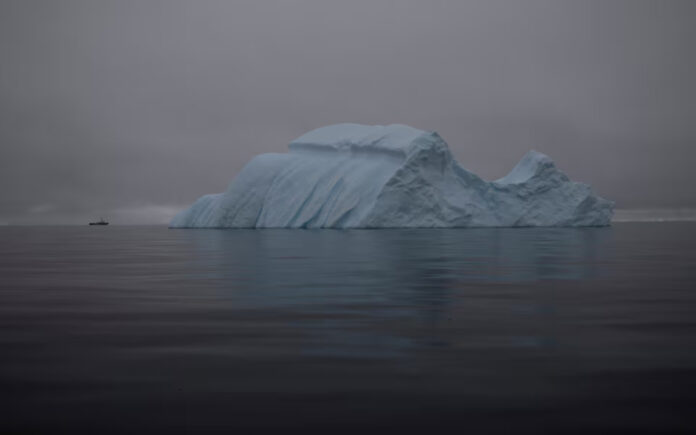Pucon: Nearly 1,500 academics, researchers, and scientists specializing in Antarctic studies convened in southern Chile this week for the 11th Scientific Committee on Antarctic Research conference. The gathering showcased the most advanced and current research from the expansive white continent, covering disciplines ranging from geology and biology to glaciology and the arts. However, a profound concern permeated the event: Antarctica is undergoing rapid and unexpected changes.
Recent firsthand accounts from researchers detailed extreme weather phenomena previously considered hypothetical. Reports included incidents of heavy rainfall, intense heatwaves, and sudden Foehn winds—strong, dry gusts—that have resulted in massive melting events, significant glacier break-offs, and hazardous weather conditions with far-reaching global effects.
With comprehensive weather station and satellite data available for only the past four decades, scientists are grappling with whether these alarming events signify that Antarctica has reached a critical tipping point. Such a point could indicate accelerated and irreversible sea ice loss, particularly from the West Antarctic ice sheet.
“There’s uncertainty about whether the current observations indicate a temporary dip or a downward plunge (of sea ice),” said Liz Keller, a paleoclimate specialist from the Victoria University of Wellington in New Zealand, who led a session focused on predicting and detecting tipping points in Antarctica.
According to NASA estimates, the Antarctic ice sheet holds enough ice to raise global mean sea levels by up to 58 meters. Considering that approximately one-third of the world’s population resides below 100 vertical meters of sea level, the implications of significant ice loss are profound.
While determining if we’ve reached a “point of no return” remains challenging, Keller emphasized that the current rate of change is unparalleled. “You might see the same rise in CO2 over thousands of years, and now it’s happened in 100 years,” she said.
Supporting this perspective, Mike Weber, a paleooceanographer from Germany’s University of Bonn specializing in Antarctic ice sheet stability, revealed that sediment records dating back 21,000 years demonstrate similar periods of accelerated ice melt. “The ice sheet has experienced similar accelerated ice mass loss at least eight times,” Weber explained. These periods began over a few decades and triggered centuries-long phases of ice loss, leading to dramatically higher sea levels worldwide.
Weber noted that ice loss has intensified over the last decade, raising questions about whether we’re already amidst another prolonged phase. “Maybe we’re entering such a phase right now,” he said. “If we are, at least for now, there will be no stopping it.”
Also Read | Senegal Halts Mining to Protect Faleme River and Local Communities
Mitigating the Impact Through Emission Reductions
Despite some assertions that certain climate changes are already irreversible, the scientific community agrees that the most catastrophic outcomes can still be prevented by significantly reducing fossil fuel emissions.
Weber highlighted that the Earth’s crust naturally rebounds in response to retreating glaciers and their diminishing weight, a process that could counterbalance sea level rise if the rate of change remains gradual. “If we keep emissions low, we can stop this eventually,” Weber stated. “If we keep them high, we have a runaway situation and we cannot do anything.”
Adding to the discussion, Mathieu Casado, a paleoclimate and polar meteorologist at France’s Climate and Environment Sciences Laboratory, specializes in using water isotopes to reconstruct historical temperatures. Casado’s analysis of numerous ice cores collected across the ice sheet has enabled him to map temperature patterns in Antarctica dating back 800,000 years. His research indicates that the recent temperature rise over the past fifty years is distinctly outside natural variability, underscoring the significant impact of industrial carbon emissions on climate change.
Also Read | Starmer’s Berlin Visit Seeks to Reset British-EU Relations with New Treaty
Casado pointed out that the last time Earth experienced similar warmth was 125,000 years ago when sea levels were 6 to 9 meters higher, “with quite a bit of contribution for West Antarctica.” Historically, temperature and carbon dioxide levels maintained equilibrium, but current CO2 concentrations are exceptionally high, disrupting this balance. “The speed and quantity at which carbon is being pumped into the atmosphere is unprecedented,” Casado noted.
Echoing these concerns, Gino Casassa, a glaciologist and head of the Chilean Antarctic Institute, warned that current projections indicate sea levels could rise by 4 meters by 2100, with even greater increases if emissions continue unchecked. “What happens in Antarctica doesn’t stay in Antarctica,” Casassa cautioned, emphasizing the interconnectedness of global atmospheric, oceanic, and weather patterns with the Antarctic region. “Antarctica isn’t just an ice refrigerator isolated from the rest of the planet that has no impact.”



